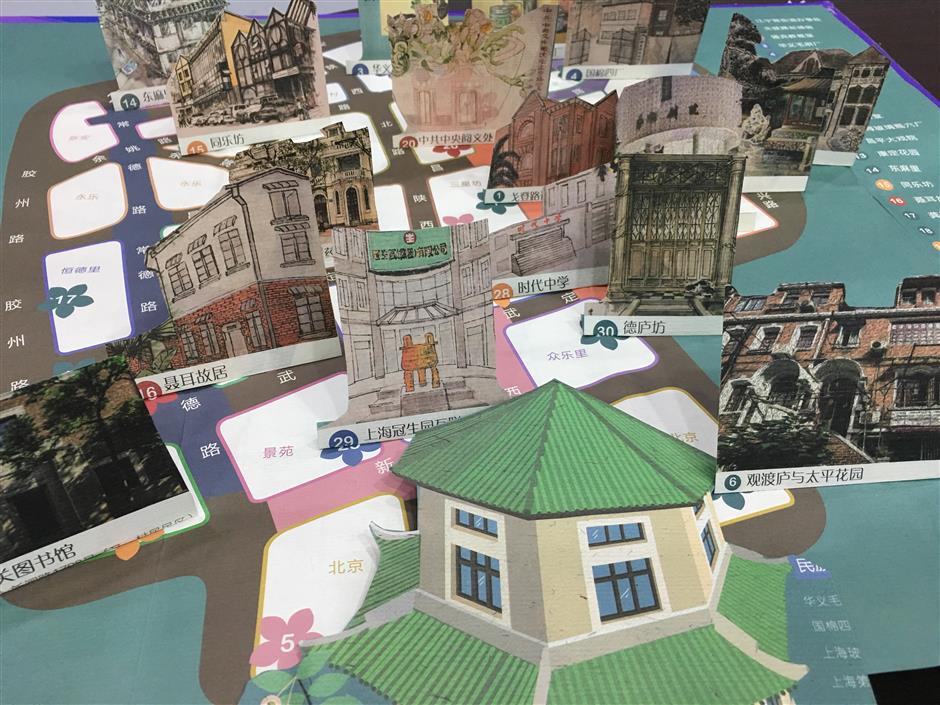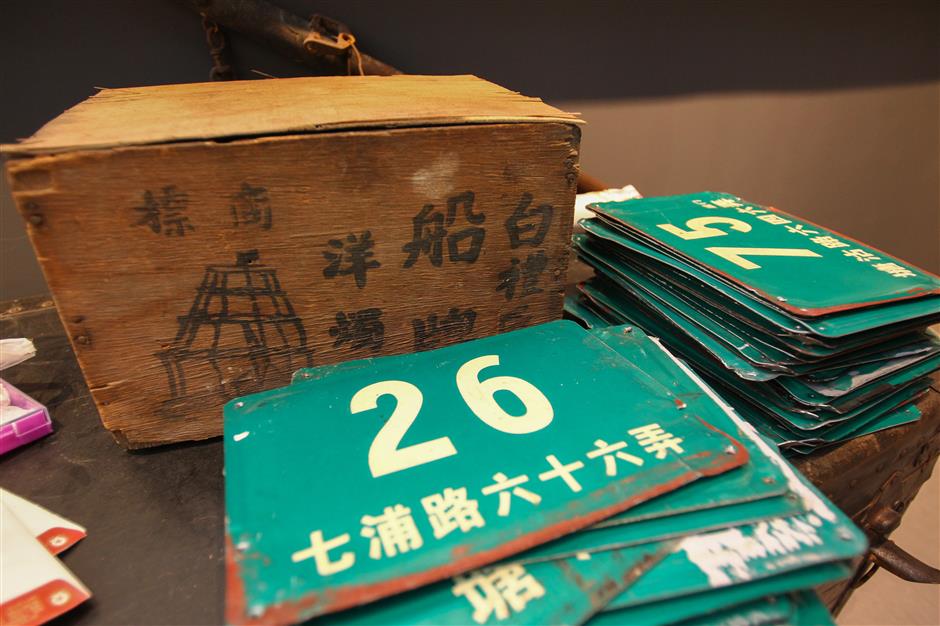A bounty of culture offers something for everyone
Jing’an announced its selections of the top 10 cultural events in the district this year. Here is a sampling of some of them.

Celebrating 40 years of progress
An exhibition featuring the clothing styles of the last four decades was held at the district’s cultural center. Students from the Shanghai YF Vocational and Polytechnical School took to the catwalk, wearing exquisitely embroidered cheongsam made by skilled craftsmen and self-designed pieces that blended traditional and modern styles.
Zhangyuan 99, a popular dining place in renovated historical buildings, installed retro interior décor with a 1980s feeling.
There, a special exhibition showcased the changing eating habits of Shanghai people.
It ranged from a display of liangpiao (food ration coupons) to imported biscuit tins that appeared as the nation opened its doors to foreign trade.
In the Xiwang Garden Lane Museum, young students listened to history talks by renowned scholars. The museum itself is a lesson in history. Its collection ranges from 1930s toys to beepers of the 1990s, and family treasures and collections.
Xiwang, built in 1911, is a typical Shanghai lane-style neighborhood that fuses Eastern and Western styles. It contains 12 British Queen Anne-style buildings on interconnected lanes.

Self-service, 24-hour libraries
The district now has six libraries that are unstaffed and open 24 hours. They are located in industrial parks and residential neighborhoods.
The new services allow people to come, read and borrow books whenever they want. The concept has proven popular with people on shift work and insomniacs who welcome a cozy place to go in the middle of the night.
There are no librarians on duty. Each facility provides hundreds to thousands of books, selected by the district library according to the borrowing tastes of local residents. Readers gain entry to the libraries and can borrow books using their library cards.
The district also operates two library vans that drive around bustling streets such as Wujiang Road and the Jing’ansi commercial zone to give white-collar workers access to books during their lunch breaks.
It is all part of the district’s “10-minute cultural circle,” which promises that all residents will have a cultural site, such as a bookstore, cinema or theater, within a 10-minute walk from their homes.

Jiangning’s history preservation
The Jiangning Road subdistrict has been working hard to preserve its past and pass its history down to the future generations.
This year, it made71 of its historical buildings “readable.” By scanning QR codes on the facades of the buildings, people can access the history of each.
Also, the subdistrict organized a treasure-hunting game that left clues for participants inside historical buildings.

Shaanxi Road N. activities
Originally named Seymour Road when it was built in 1914, this one-kilometer street has long been regarded as an epitome of the city’s inclusive spirit and international atmosphere.
Shanghai writer Cheng Naishan once famously said she was reminded of the road when she chanced upon a small alley during a visit to the Leaning Tower of Pisa.
The road is dotted with more than 20 historical buildings of different architectural styles. They include the traditional shikumen-style Datong Lane, the neoclassical Garden House, the red-brick townhouses of Pacific Garden and the Greek revival-style of the Ohel Rachel Synagogue.
The southern section of Shaanxi Road is mostly commercial, while the section between
Nanjing and Weihai roads is home to 17 shops selling venerated brands.
The road’s information center at 600 Shaanxi Road N heralded a variety of activities this year to allow visitors to know more about the road. It gathered painters to create a view of the road on a window of the center, organized people to visit heritage-listed buildings and hosted scholars who gave talks on the road’s history.
The information center calls itself a “cultural ambassador.” It has introduced the history and culture of the goat-head fiddle used by the Pumi ethnic group in Yunnan Province, and held a variety of exhibitions on paper cutting and other traditional handicrafts.
3) Activities in the Beizhan subdistrict.
Beizhan, which is home to numerous historical locations, takes its name from China’s first railway station, the former Shanghai North Railway Station, which is known in Chinese as Lao Beizhan.
The subdistrict once housed China’s first silk reeling factory, was home to China’s first modern chamber of commerce and was the site of the first Western-style court.
In March, the subdistrict held a special exhibition highlighting its cultural history with displays of old photos and other memorabilia of the past. The exhibition attracted nearly 4,000 visitors in a month.
In April, the subdistrict invited more than 30 senior citizens who had been longtime residents before urban-renewal relocation to return to Beizhan and share stories of their childhood. Many came with old family treasures, which touched many hearts and prompted residents to call for a permanent exhibition hall to house them.
That same month, the subdistrict organized a tour of more than 100 people to visit old warehouses along Suzhou Creek and invited historians to recount the stories behind the historical buildings.

Activities in Beizhan subdistrict
Beizhan, which is home to numerous historical locations, takes its name from China’s first railway station, the former Shanghai North Railway Station, which is known in Chinese as Lao Beizhan.
The subdistrict once housed China’s first silk reeling factory, was home to China’s first modern chamber of commerce and was the site of the first Western-style court.
In March, the subdistrict held a special exhibition highlighting its cultural history with displays of old photos and other memorabilia of the past. The exhibition attracted nearly 4,000 visitors in a month.
In April, the subdistrict invited more than 30 senior citizens who had been longtime residents before urban-renewal relocation to return to Beizhan and share stories of their childhood. Many came with old family treasures, which touched many hearts and prompted residents to call for a permanent exhibition hall to house them.
That same month, the subdistrict organized a tour of more than 100 people to visit old warehouses along Suzhou Creek and invited historians to recount the stories behind the historical buildings.
















